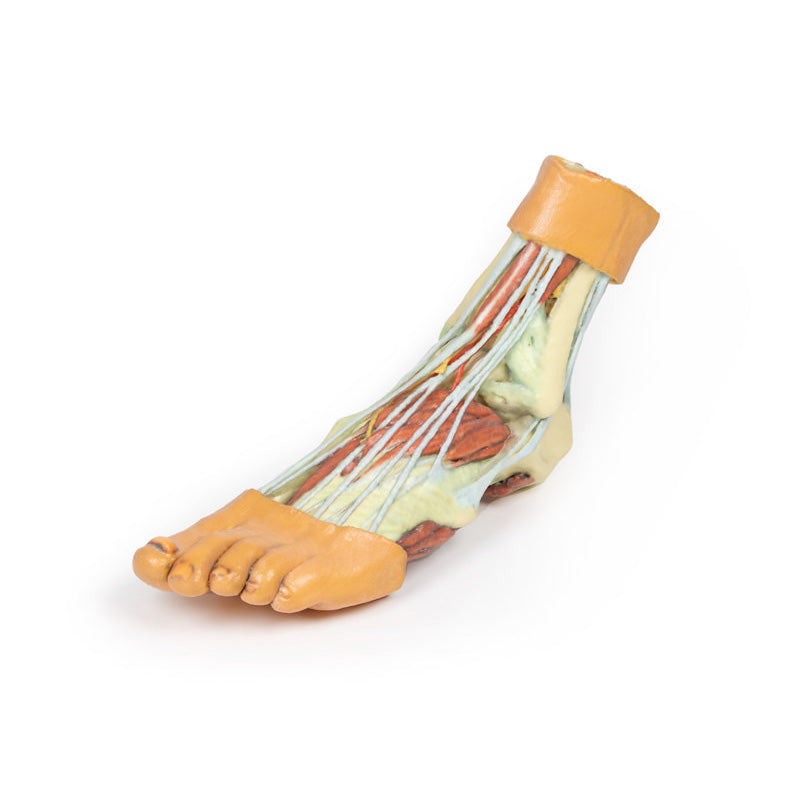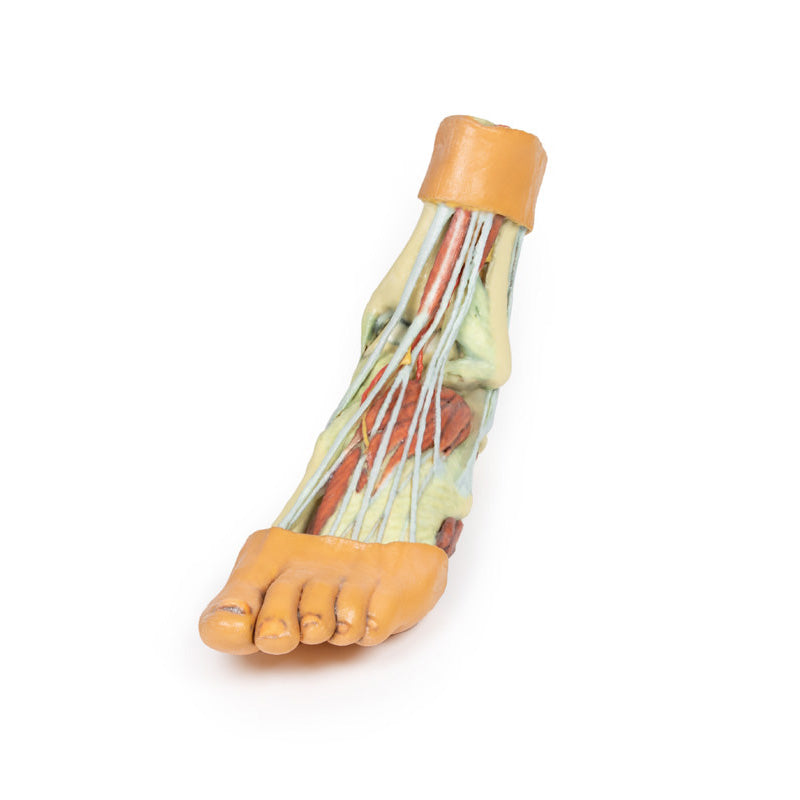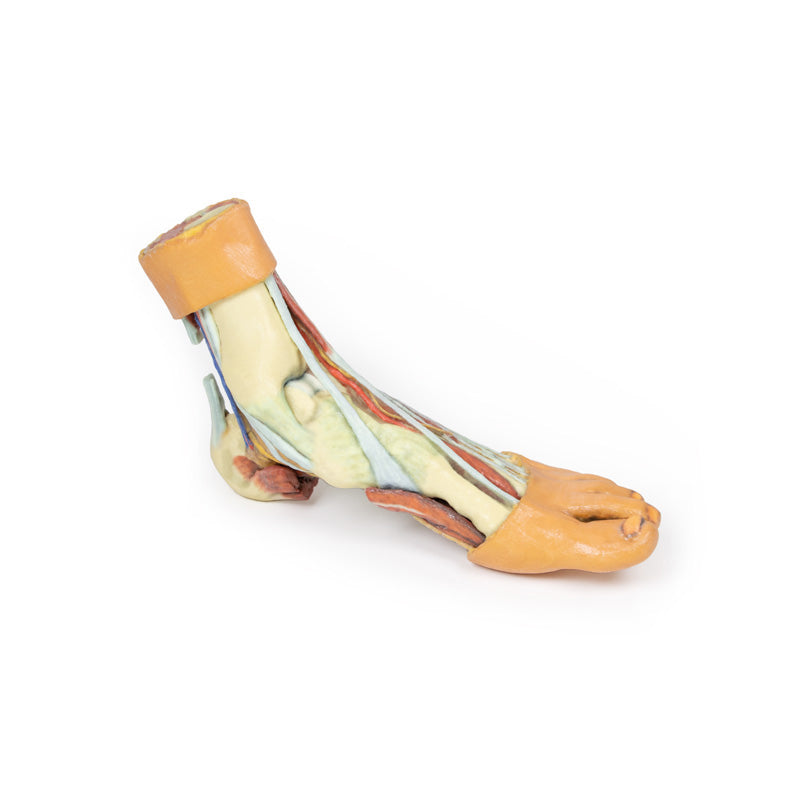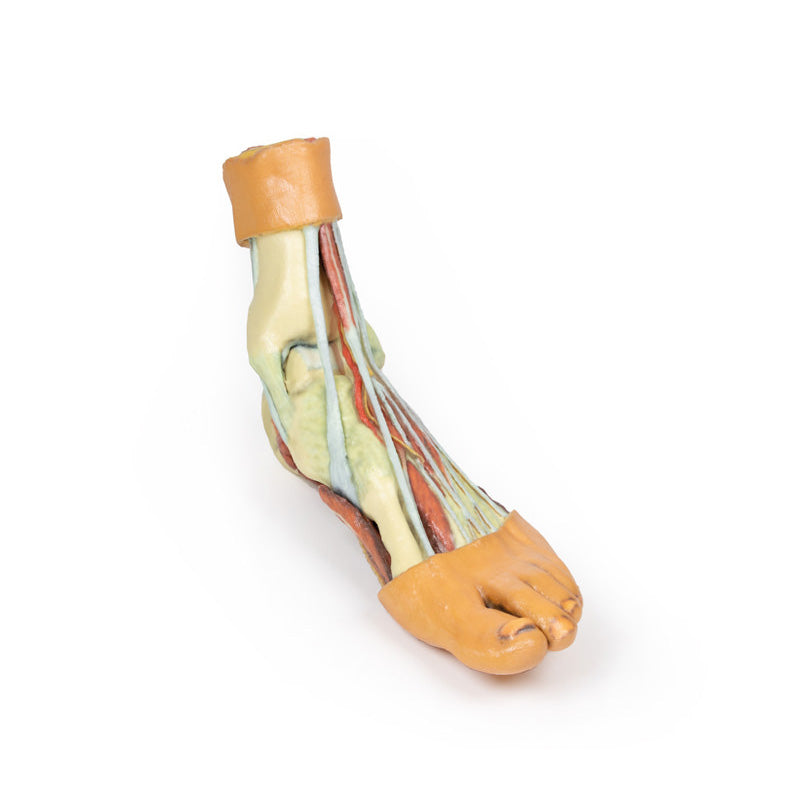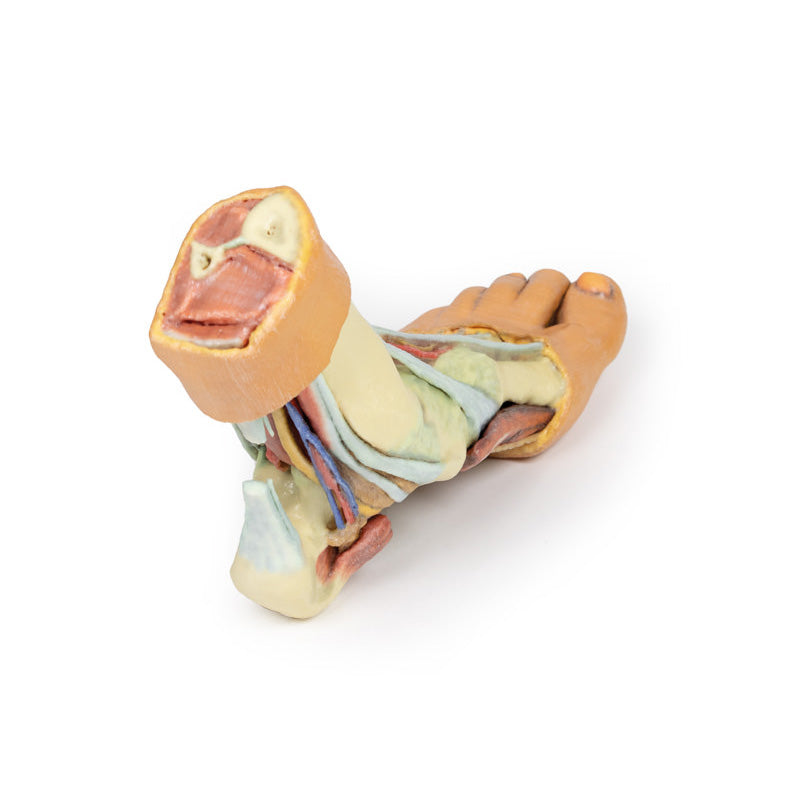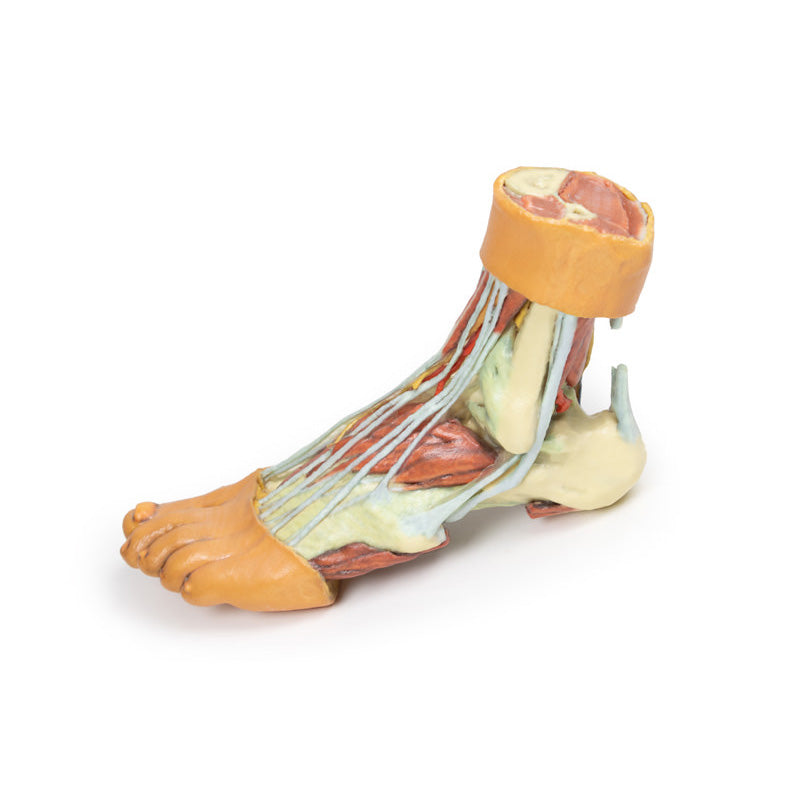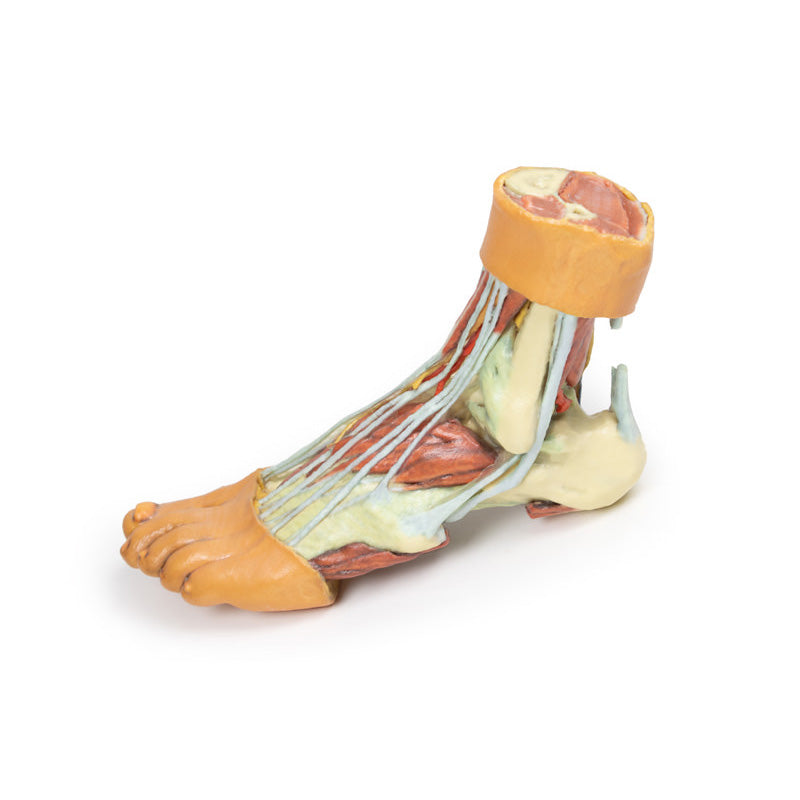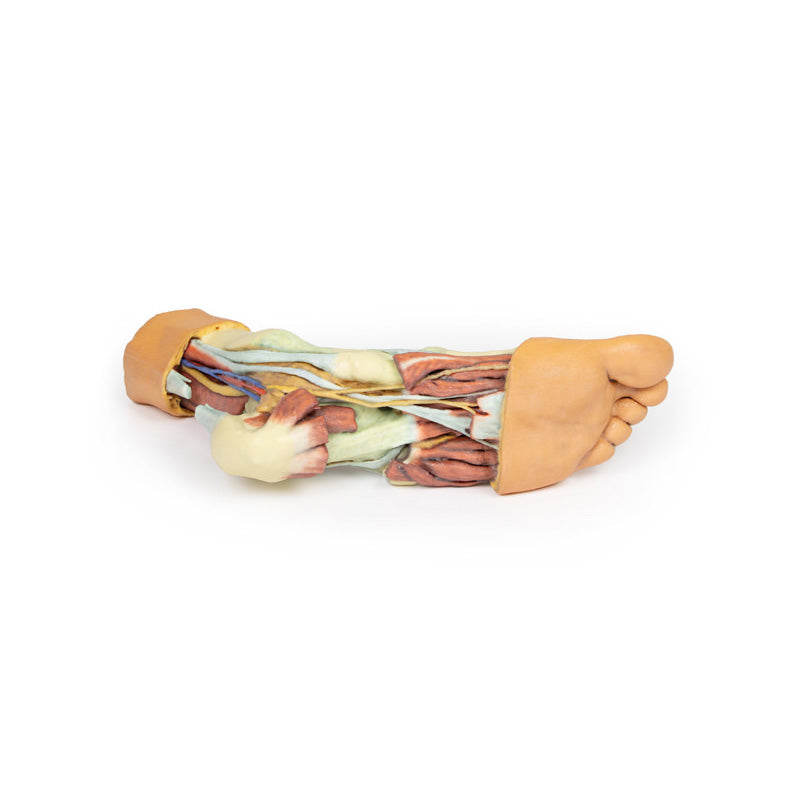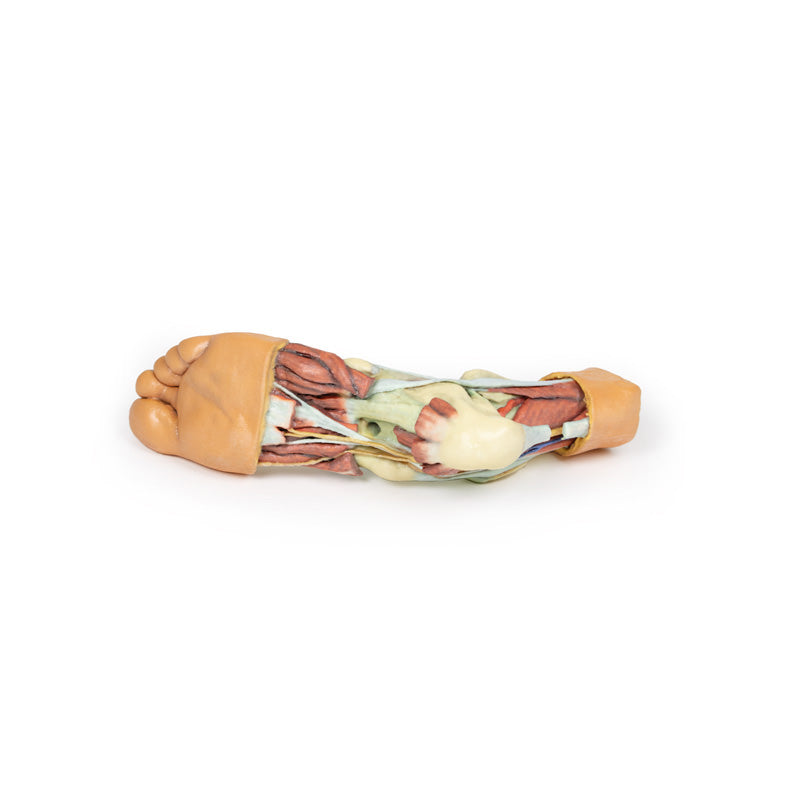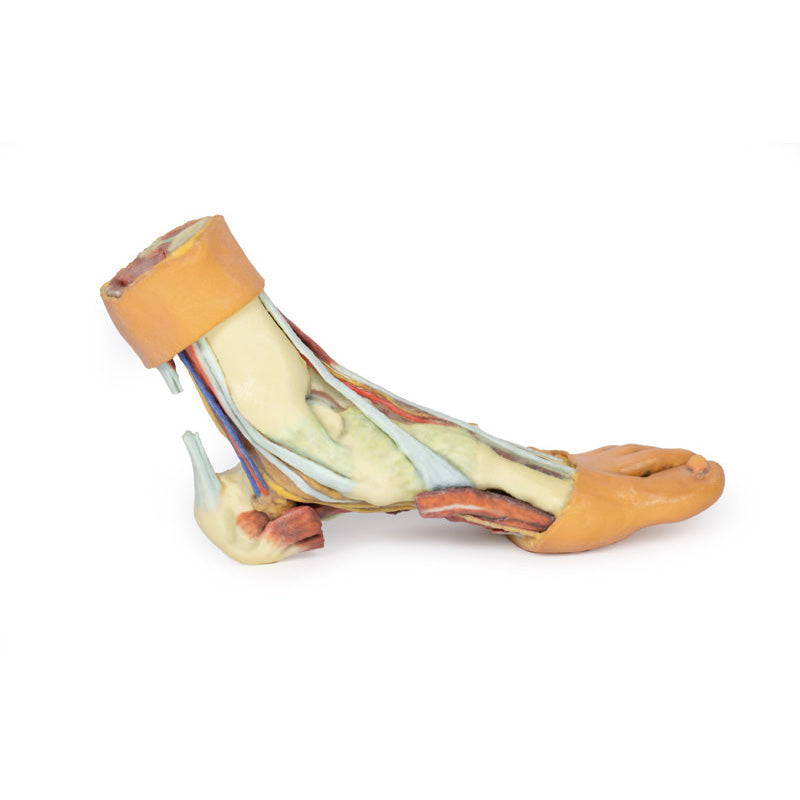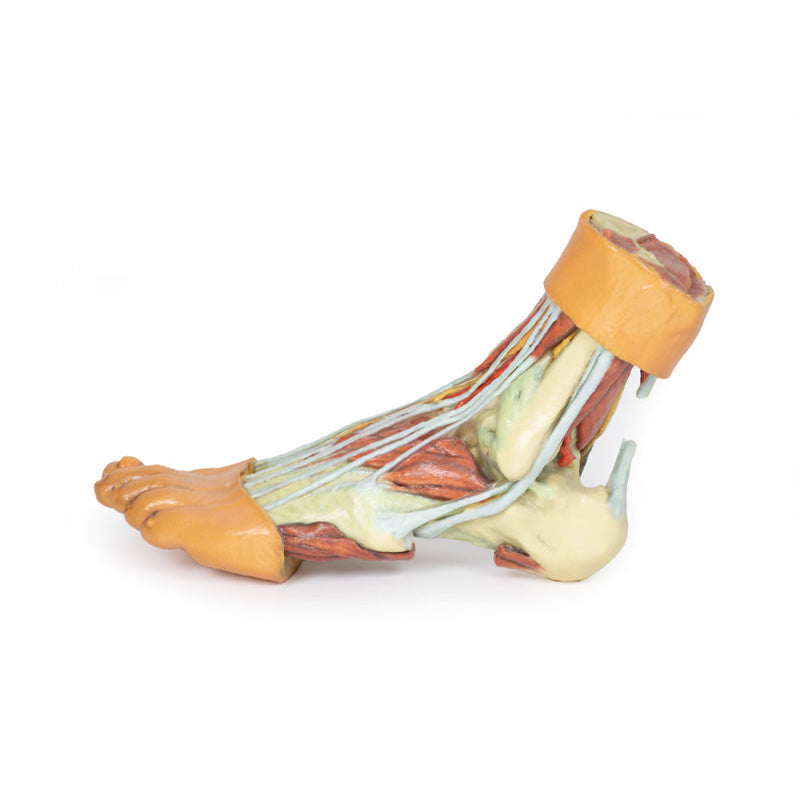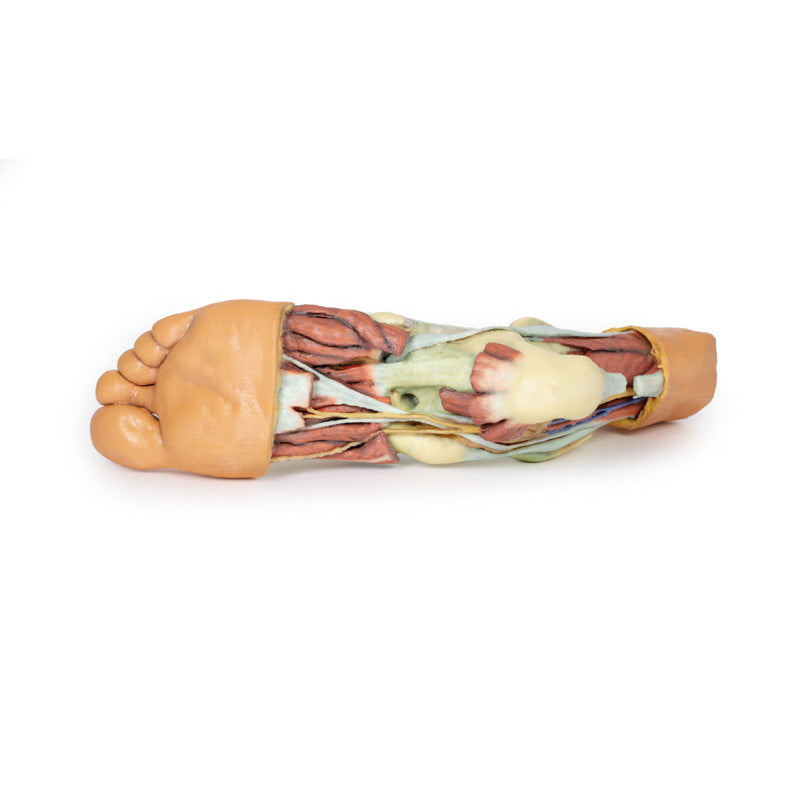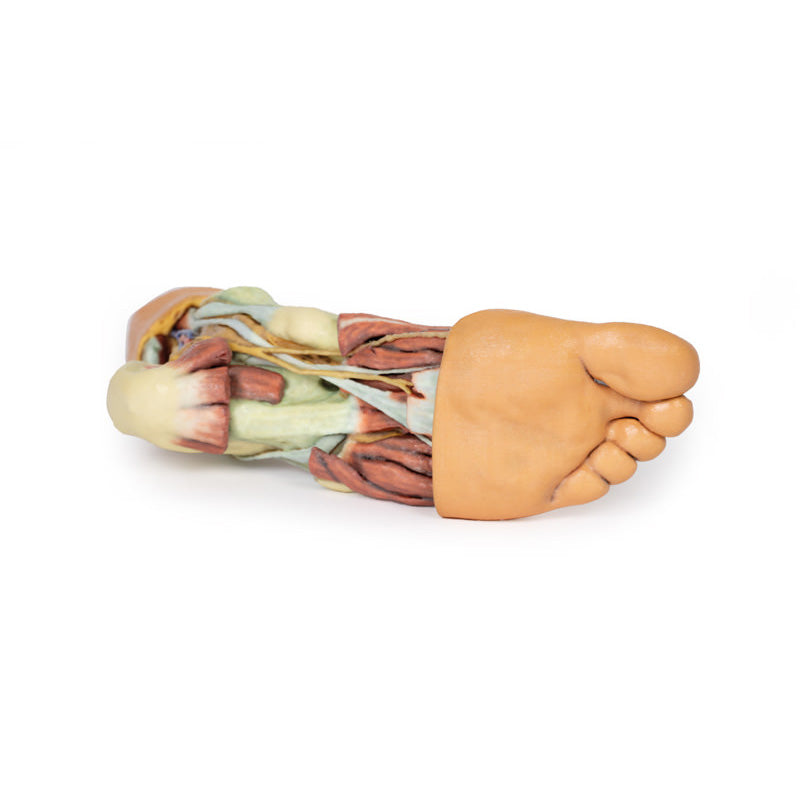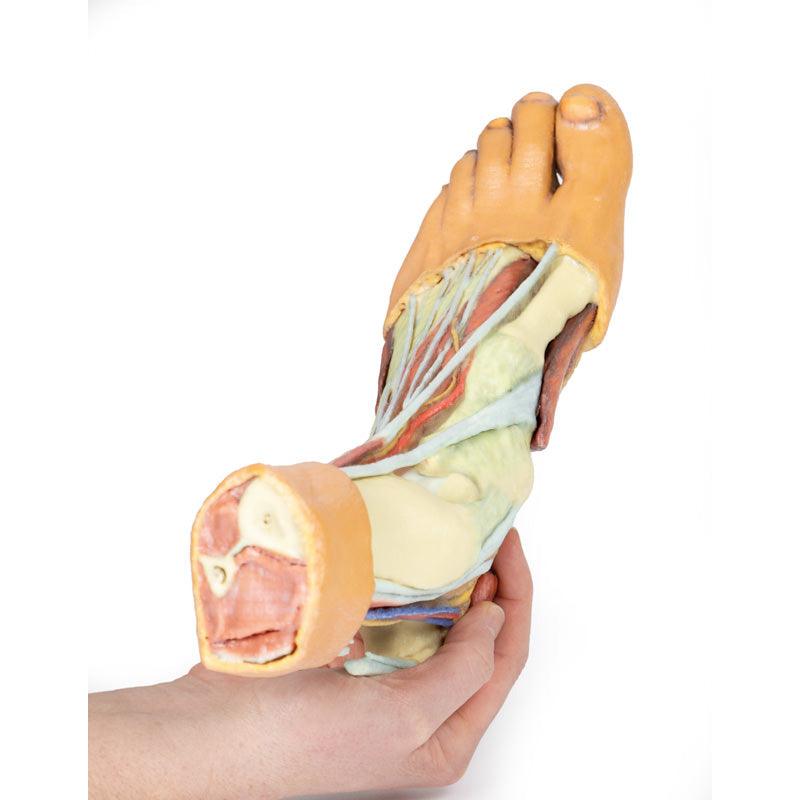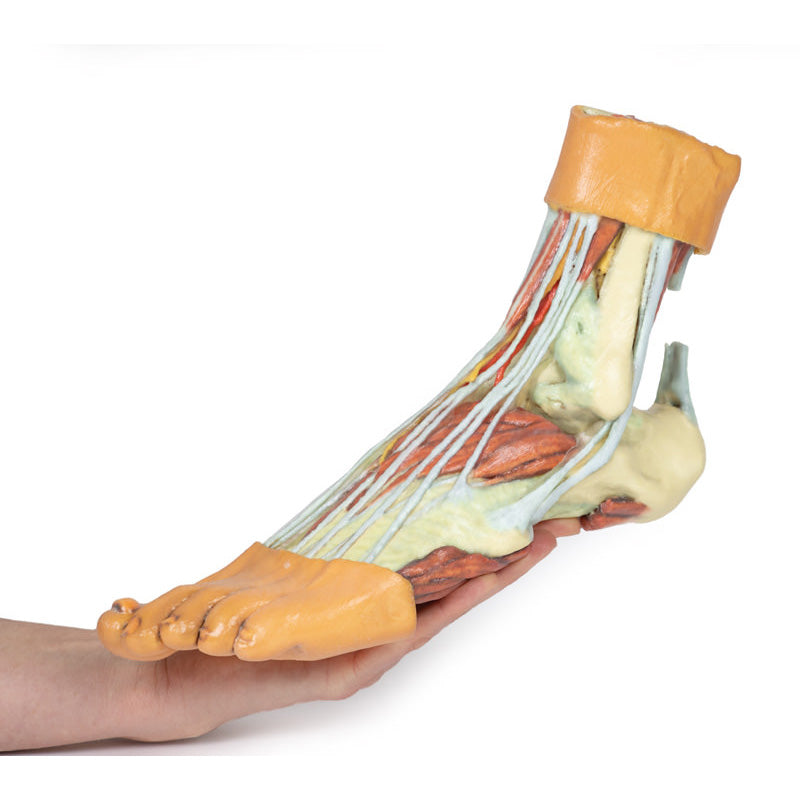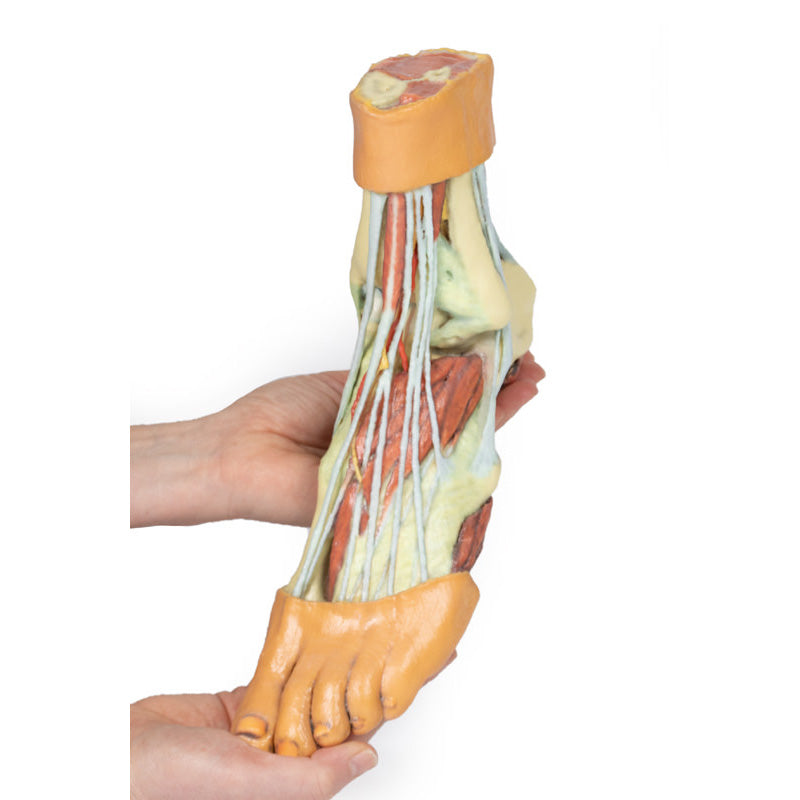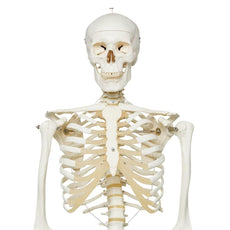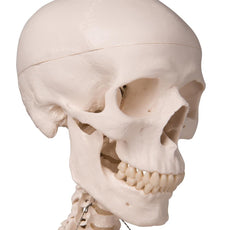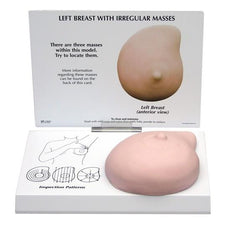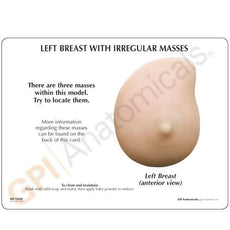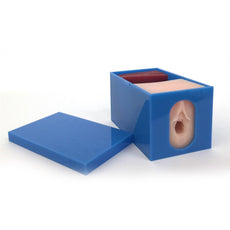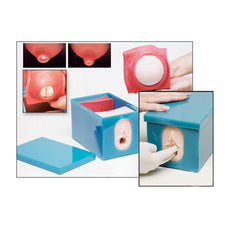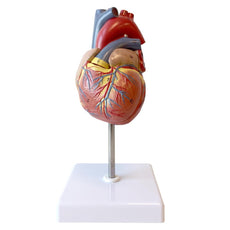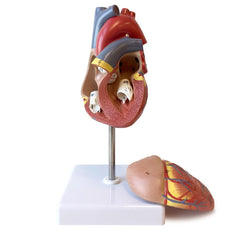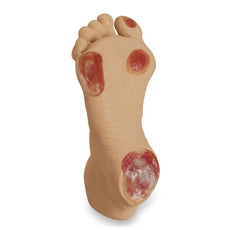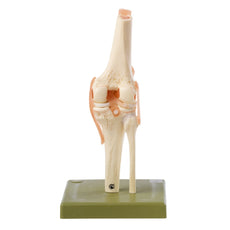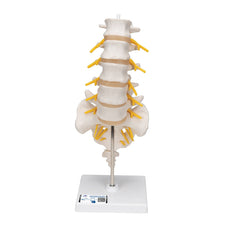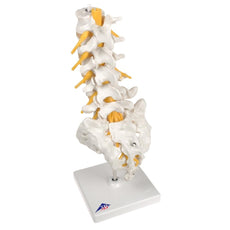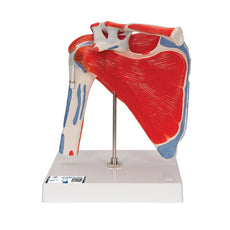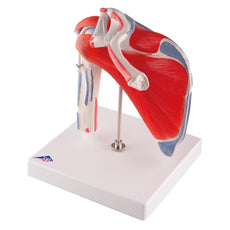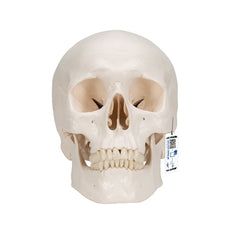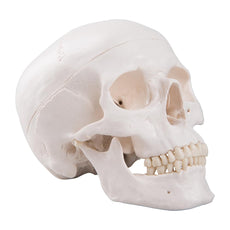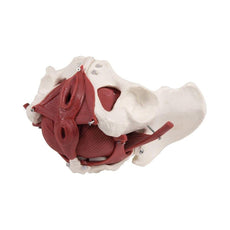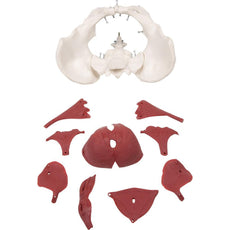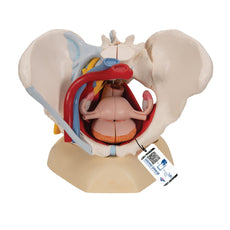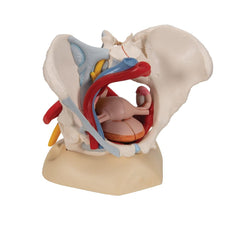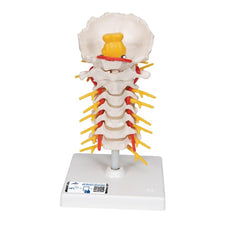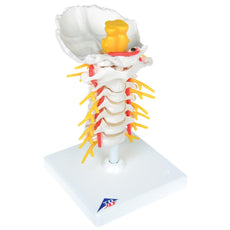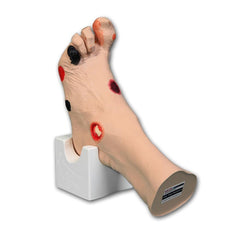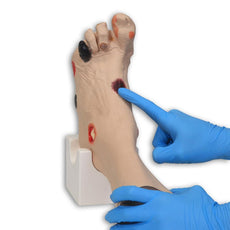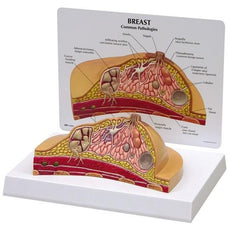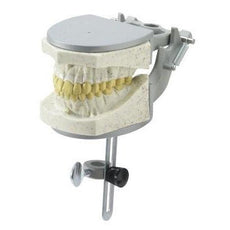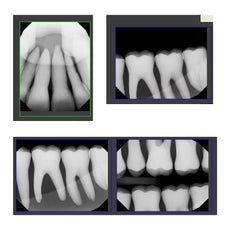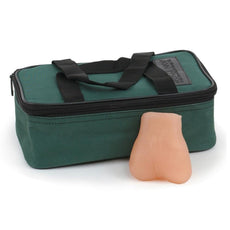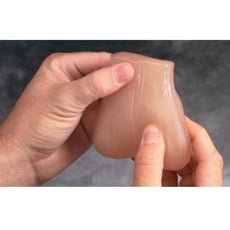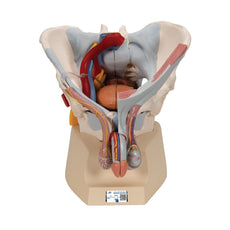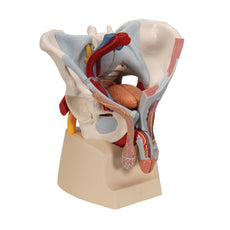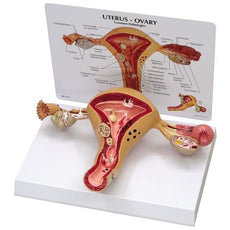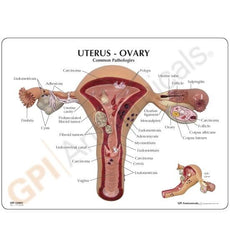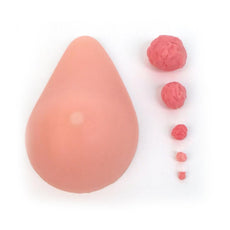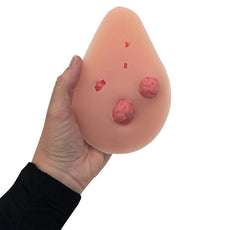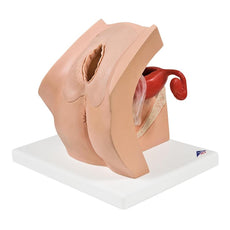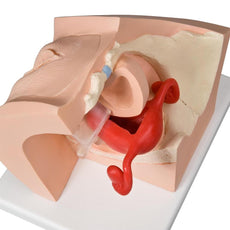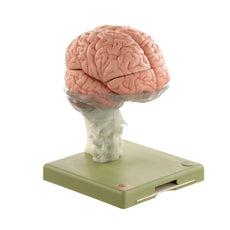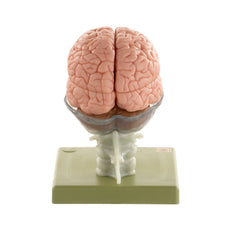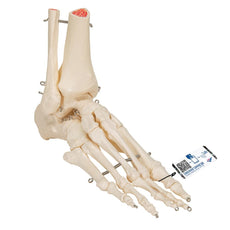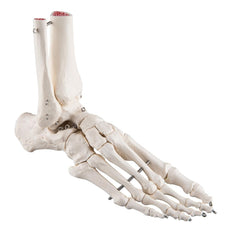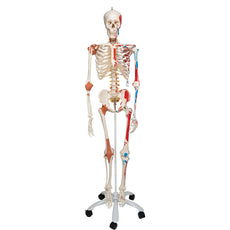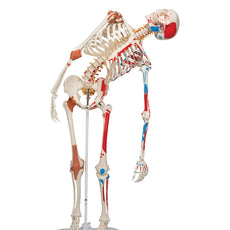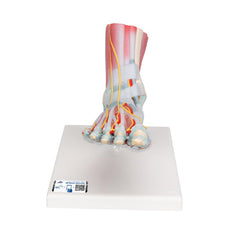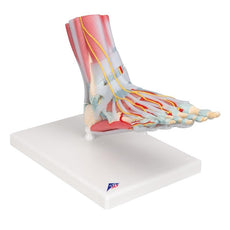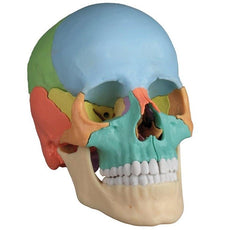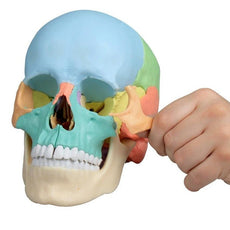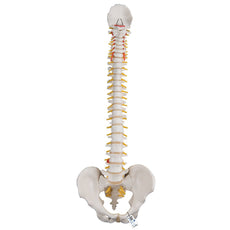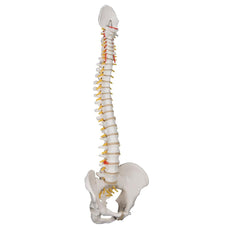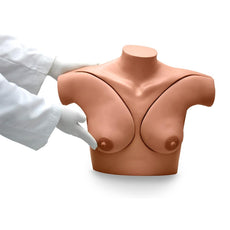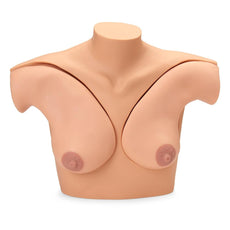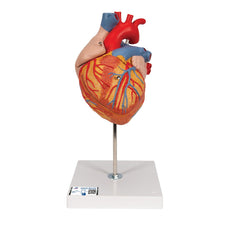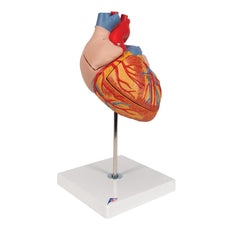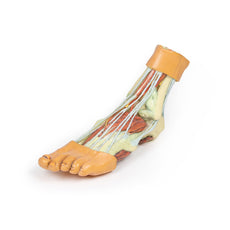Your shopping cart is empty.
3D Printed Foot - Structures of the plantar surface

The posterior tibial artery, veins, and tibial nerve are exposed through their course from the posterior leg to the plantar surface of the foot. Laterally, the course and insertion of the fibularis muscles (longus, brevis and tertius) are visible. On the dorsum of the foot, the anterior tibial artery and deep fibular nerve emerge from deep to the extensor hallucis longus just superficial to the extensor hallucis brevis and extensor digitorum brevis muscles.
On the plantar surface of the foot, the plantar aponeurosis and portions of the superficial and deep musculature (flexor digitorum brevis, abductor hallucis, abductor digiti minimi, quadratus plantae) has removed between the calcaneous and bases of the metatarsals to display the course of the tibialis posterior, flexor digitorum longus, flexor hallucis longus, and fibularis longus tendons.
The origins of both the flexor hallucis brevis and flexor digiti minimi brevis are visible, as are lumbribals arising from the flexor digitorum longus tendons.
Download Handling Guidelines for 3D Printed Models
GTSimulators by Global Technologies
Erler Zimmer Authorized Dealer

8.0 lb

3D Printed Foot - Structures of the plantar surface
Item # MP1900
$1,423.00
$1,582.00
You save $159.00
Need an estimate?
Click Add To Quote

Features & Specifications
-
by
A trusted GT partner -
FREE Shipping
U.S. Contiguous States Only -
3D Printed Model
from a real specimen -
Gov't pricing
Available upon request
Frequently Bought Together
3D Printed Foot - Structures of the plantar surface
This 3D print records the anatomy of a right distal leg and the deep structures of the plantar surface of the foot. Proximally, the tibia, fibula, interosseous membrane, and leg muscles are discernable in cross-section. Medially, at the level of the ankle joint, the long tendons of the dorsi- and plantar-flexors are visible superficial to the capsular and extra capsular ligaments.The posterior tibial artery, veins, and tibial nerve are exposed through their course from the posterior leg to the plantar surface of the foot. Laterally, the course and insertion of the fibularis muscles (longus, brevis and tertius) are visible. On the dorsum of the foot, the anterior tibial artery and deep fibular nerve emerge from deep to the extensor hallucis longus just superficial to the extensor hallucis brevis and extensor digitorum brevis muscles.
On the plantar surface of the foot, the plantar aponeurosis and portions of the superficial and deep musculature (flexor digitorum brevis, abductor hallucis, abductor digiti minimi, quadratus plantae) has removed between the calcaneous and bases of the metatarsals to display the course of the tibialis posterior, flexor digitorum longus, flexor hallucis longus, and fibularis longus tendons.
The origins of both the flexor hallucis brevis and flexor digiti minimi brevis are visible, as are lumbribals arising from the flexor digitorum longus tendons.
Download Handling Guidelines for 3D Printed Models
GTSimulators by Global Technologies
Erler Zimmer Authorized Dealer
These items normal warranty are two years, however the warranty doesn’t cover “wear and tear”. The manufacturer does have 100% quality control on these models.
The models are very detailed and delicate. With normal production machines you cannot realize such details like shown in these models.
The printer used is a color-plastic printer. This is the most suitable printer for these models.
The plastic material is already the best and most suitable material for these prints. (The other option would be a kind of gypsum, but this is way more fragile. You even cannot get them out of the printer without breaking them).The huge advantage of the prints is that they are very realistic as the data is coming from real human specimen. Nothing is shaped or stylized.
The users have to handle these prints with utmost care. They are not made for touching or bending any thin nerves, arteries, vessels etc. The 3D printed models should sit on a table and just rotated at the table.
The models are very detailed and delicate. With normal production machines you cannot realize such details like shown in these models.
The printer used is a color-plastic printer. This is the most suitable printer for these models.
The plastic material is already the best and most suitable material for these prints. (The other option would be a kind of gypsum, but this is way more fragile. You even cannot get them out of the printer without breaking them).The huge advantage of the prints is that they are very realistic as the data is coming from real human specimen. Nothing is shaped or stylized.
The users have to handle these prints with utmost care. They are not made for touching or bending any thin nerves, arteries, vessels etc. The 3D printed models should sit on a table and just rotated at the table.

by — Item # MP1900
3D Printed Foot - Structures of the plantar surface
$1,423.00
$1,582.00
Add to Cart
Add to Quote



